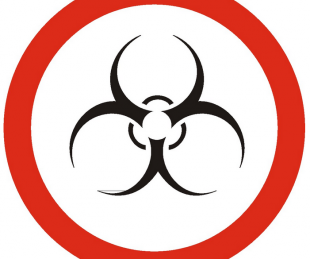Worried about bloodborne disease? Working in a high-risk environment? Get the knowledge you need to lower your bloodborne pathogen exposure risks with our tips and training!
What are bloodborne pathogens?
OSHA defines bloodborne pathogens as infectious microorganisms in human blood that can cause disease in humans. Pathogens are microorganisms including disease causing viruses, bacteria, funguses, and parasites. The three most common viruses posing the greatest threat are:
- Hepatitis B
- Hepatitis C
- HIV
Bloodborne pathogens enter the body via contaminated blood or body fluids—in a workplace setting this is most likely to occur through accidental puncture with a sharp object (needle, glass), contact between broken skin and infected fluids, and contact between mucous membranes and infected fluids.
Who needs bloodborne pathogen training?
Anyone working in a healthcare or laboratory setting needs to be trained to help reduce occupational exposure to bloodborne pathogens. These dangerous diseases can cause serious illness and death, so avoiding initial exposure should be a paramount concern for healthcare and lab facilities.
When I was in college, I took an anatomy lab course which involved working with cadavers. I was required to complete an in-person training session, and training would have been required annually (as per OSHA) had I continued to have exposure to the lab. Often, in-person training is required initially, but online learning is acceptable for subsequent training. Check with your company to see what requirements you need to follow!
What does OSHA require?
In 1991, OSHA published the Occupational Exposure to Bloodborne Pathogens Standard, which seeks to limit occupational exposure to blood and other potentially infectious materials. Effective in 2001, the Needlestick Safety and Prevention Act revised the Standard to require use of safer needle devices.
You must protect your employees under these OSHA standards. Employees must receive training when they are first assigned to work under conditions where there is risk of bloodborne pathogen exposure. The top 5 most frequently cited sections of the Standard are:
- Establishment of a written Exposure Control Plan
- Review and update Exposure Control Plan
- Use of engineering and work practice controls
- Availability of HBV vaccination
- Employee training program
Don’t get caught in violation! You must provide training free of cost to your employees that meets OSHA standards.
Key infection prevention techniques to include in training: universal precautions, engineering and work practice controls, personal protective equipment (PPE), appropriate housekeeping measures.
Need Training? OpenSesame offers many courses on bloodborne pathogens, many of which specifically comply with the OSHA bloodborne pathogens standard 29CFR 1090.1030.






